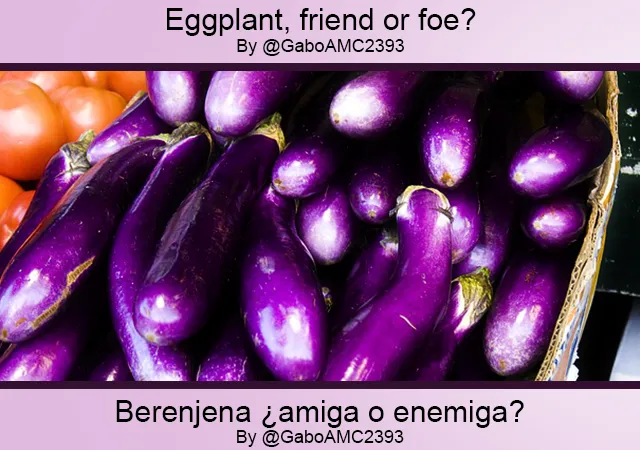
In this series of posts I will be commenting on quite interesting points about various products of plant origin; how they are grown, their varieties, health benefits, how they can harm us and how we should/could consume them. After having commented on all these points, it will be up to each one of us to answer the question, friend or foe?.
In the previous post, the vegetable of choice was the tomato. A couple of users, @nineclaws and @psyfire25 made positive comments about the publication, considering the tomato as a friend, so I take this opportunity to thank them for valuing the topic with their words. Moreover, the publication received a mention from @naturalmedicine in the Lotus Love Sunday Editorial, something for which I am very grateful. All in all, I think the publication was well received, despite being the second one I'd done in this community....
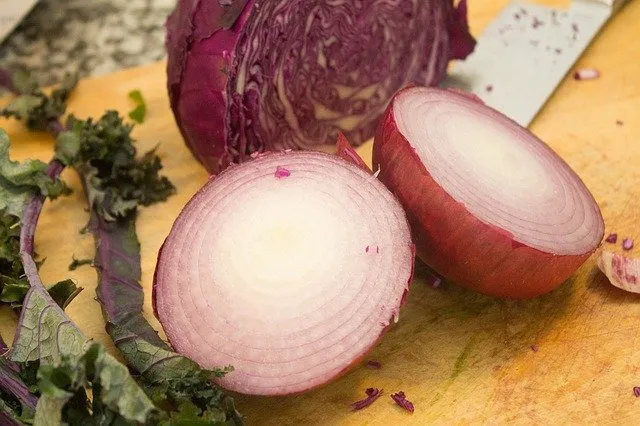
Source
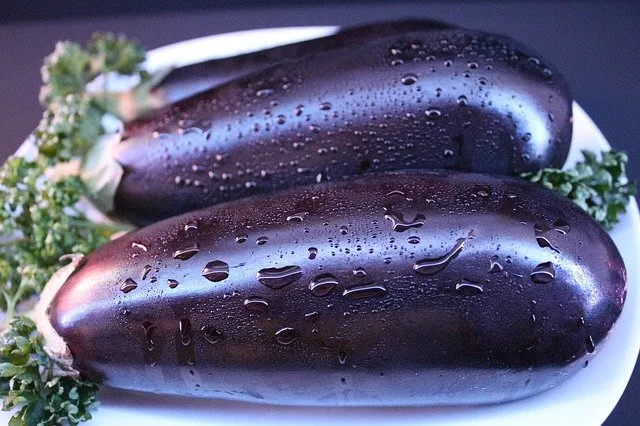
Source
Eggplant is a very common fruit here in my country. Because of its versatility, people use it to make a variety of recipes; from stuffed eggplants to homemade sauces. It is true that some people have no idea of the amount of recipes that can be prepared with eggplant, I myself have met people who do not know it and in case they do, they do not know how to prepare even the simplest recipe. I remember, for example, a conversation I had with a neighbor some time ago. One day, his wife asked him if he knew what could be done with the eggplants he had bought; he obviously had no idea, but he told his wife to cut them in half, stuff them with ground beef and cheese, put them in the oven and that was it. As it turned out, the eggplants turned out bitter and the only thing he could eat from that dish was the meat and cheese.
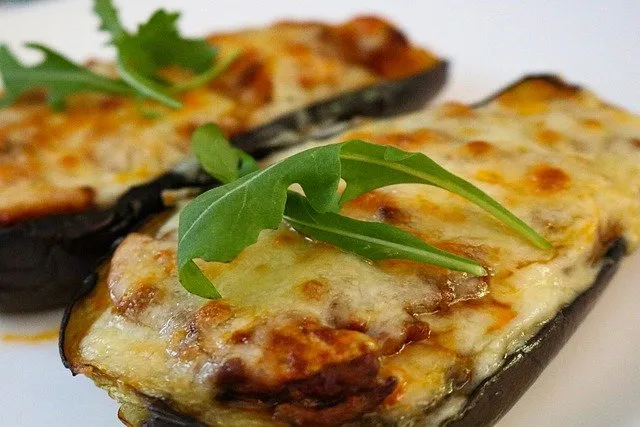
Source
Why is the stuffed eggplant dish bitter? Well, eggplants have certain substances that give them this bitter taste, which can be eliminated if certain previous processes are followed, such as soaking them in salt and water before cooking.
But before continuing with the subject, I will tell you something I learned growing eggplants. If you have ever cut an eggplant in half, you have surely seen the large number of seeds inside. One might think that, with so many seeds, it would be easy to take some of these seeds, wait for them to germinate and that's it, we will have our plant that, in about six months, will give as fruit a few eggplants, but no. When we see an eggplant in its usual purple color, sometimes white or other shades, we may think that the fruit is ripe, but this is not so; in reality, the fruit is "green", so to speak.
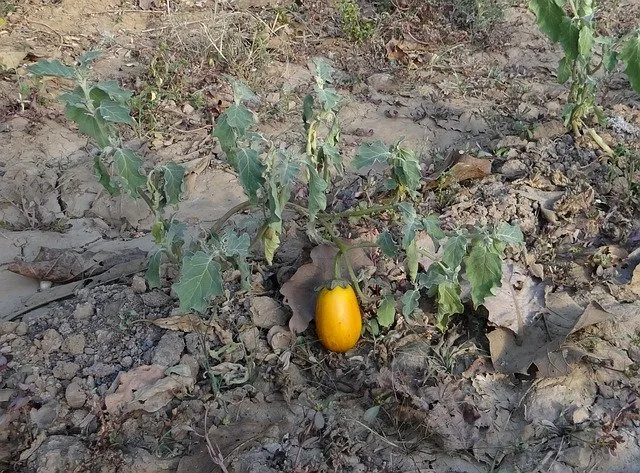
Source
Just like the banana, which is first green and then adopts its usual yellow color, the eggplant is first purple and then, as it approaches maturity, it adopts a yellowish color and a taste that few people could stand, a taste that is not at all pleasant. I mention this because if we take seeds from the eggplant while it is purple, these seeds will hardly germinate, since they are not fertilized; on the other hand, if we take seeds from the ripe fruit, that is, when it is yellowish, our seeds will germinate. It should be noted that the fruit will only ripen if it is still on the plant, which makes it difficult to obtain eggplant seeds by simply buying a purple eggplant in the market to extract its seeds, something that can be done with a tomato, a melon, a pumpkin, among other vegetables.
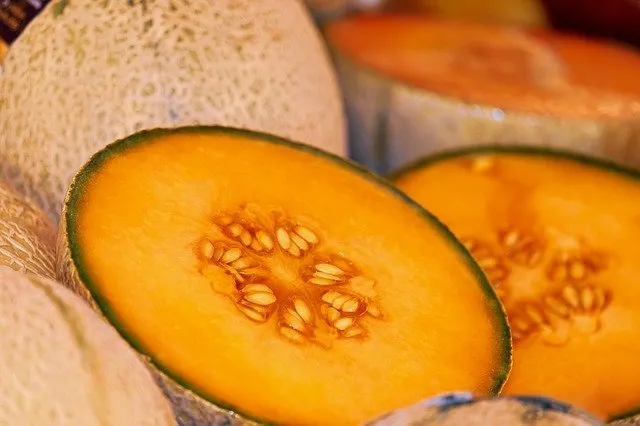
Source
Now, what can be said about the benefits of eggplant for our health? Well, according to the Spanish Heart Foundation, in a Blog Impulso Vital, eggplant has many benefits, but there are some that cannot be fully proven.

Source
Let's think for example about the composition of eggplant. According to the source mentioned above, it is composed of 92% water, so we could consider it useful for a low-calorie diet. So, as mentioned at the beginning of the publication, many recipes can be made with eggplant; however, according to the same source, eggplant can absorb a lot of oil and other fats during its preparation, so we must be careful with the recipe we are going to choose, especially if we consume it with the intention of reducing fat intake.
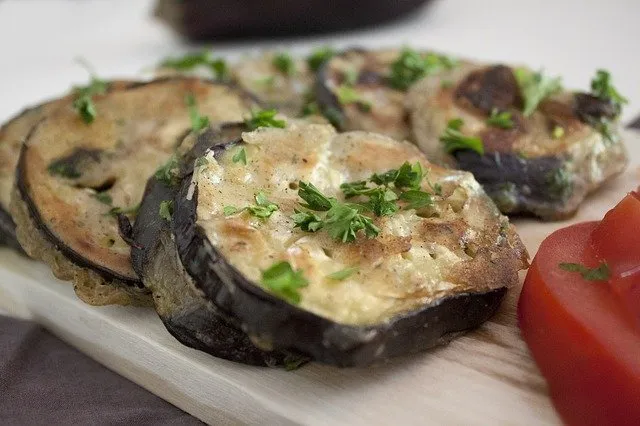
Source
Another benefit mentioned by the Spanish Heart Foundation, is the amount of fiber it has, as well as vitamins and minerals useful for different functions for our body. However, a very important fact that you mention in your article is that eggplant contains compounds called amines. How do they affect us? According to another article (Foods that can trigger migraines, Gerontological Institute), the consumption of certain foods containing amines can trigger migraines in some people. On the other hand, he mentions the following about chocolate:
In addition to possessing tyramine, it is rich in phenolic compounds (flavonoids). These annul the action of the enzymes that process tyramine, thus increasing its level in the body and can trigger the dreaded migraines.
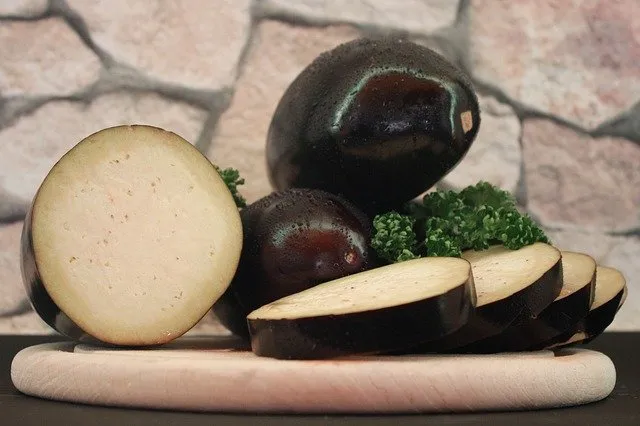
Source
It is clear that reviewing what we eat can help us to lead a better lifestyle. In any case, each organism is different and what does not harm one person may be deadly for another.
So, what do you think the eggplant is, friend or foe? Each one must answer...
Well friends, I hope you have enjoyed reading my publication and that it is of benefit to you, which is what we are looking for here, to share tips and information that contributes to our well-being. With nothing more to add, I bid you farewell...
See you next time!
*****Versión en Español*****

En esta serie de publicaciones estaré comentando puntos bastante interesantes acerca de diversos productos de origen vegetal; cómo se cultivan, sus variedades, beneficios para la salud, cómo pueden perjudicarnos y cómo debemos/podemos consumirlo. Tras haber comentado todos estos puntos, quedará de parte de cada uno contestar la pregunta, ¿amigo o enemigo?
En la publicación anterior, el vegetal elegido fue el tomate. Un par de usuarios, @nineclaws y @psyfire25 hicieron comentarios positivos sobre la publicación, considerando al tomate como un amigo, así que aprovecho para darles las gracias por valorar el tema con sus palabras. Por otra parte, la publicación recibió una mención de @naturalmedicine en el Lotus Love Sunday Editorial, algo por lo que estoy muy agradecido. En resumen, creo que la publicación fue bien recibida, a pesar de ser la segunda que había hecho en esta comunidad...

Fuente

Fuente
La berenjena es una fruta muy común aquí en mi país. Por su versatilidad, las personas lo usan para hacer diversidad de recetas; desde berenjenas rellenas, hasta salsas caseras. Es cierto que algunos no tienen ni idea de la cantidad de recetas que se pueden preparar con berenjena, yo mismo me he encontrado con personas que no lo saben y en caso de saberlo, no saben cómo preparar ni la más sencilla receta. Recuerdo, por ejemplo, una charla que tuve con un vecino hace tiempo. Cierto día, su esposa le preguntó si sabía qué se podía hacer con las berenjenas que había comprado; él obviamente no tenía ni idea, pero le dijo a su esposa que las cortase por la mitad, que las rellenase con carne molida y queso, que las metiese al horno y listo. Resulta que las berenjenas quedaron amargas y lo único que se pudo comer de ese platillo fue la carne y el queso.

Fuente
¿Por qué quedó amargo el platillo de berenjenas rellenas? Pues las berenjenas tienen ciertas sustancias que le dan este sabor amargo, el cual se puede eliminar si se cumplen con ciertos procesos previos, como remojarla en sal y agua antes de cocinarla.
Pero antes de continuar con el tema, les contaré algo que aprendí cultivando berenjenas. Si alguna vez han cortado una berenjena a la mitad, seguramente han visto la gran cantidad de semillas que tiene en su interior. Uno podría pensar que, con tantas semillas, sería fácil tomar alguna de estas semillas, esperar a que germinen y listo, ya tendremos nuestra planta que, en seis meses aproximadamente, dará como fruto unas cuantas berenjenas, pero no. Cuando vemos una berenjena en su habitual color morado, en ocasiones blanco o de otras tonalidades, tal vez pensemos que el fruto está maduro, pero esto no es así; en realidad, el fruto está “verde”, por decirlo de alguna manera.

Fuente
Tal como el plátano, que primeramente es verde y luego adopta su habitual color amarillo, la berenjena primeramente es de color morado y luego, a medida que se acerca a su estado de madurez, adopta un color amarillento y un sabor que pocas personas soportarían, un sabor para nada agradable. Hago mención de esto, porque si tomamos semillas de la berenjena mientras está de color morado, estas semillas difícilmente germinarán, ya que no están fertilizadas; por otra parte, si tomamos semillas del fruto maduro, es decir, cuando esté amarillento, sí germinarán nuestras semillas. Cabe destacar, que el fruto solo se madurará si aún está en la planta, lo que hace difícil la obtención de semillas de berenjena simplemente comprando una berenjena morada en el mercado para extraer sus semillas, algo que sí se puede hacer con un tomate, un melón, una calabaza, entre otros vegetales.

Fuente
Ahora bien, ¿qué se puede decir de los beneficios de la berenjena para nuestra salud? Pues bien, según la Fundación Española del Corazón, en un Blog Impulso Vital, la berenjena tiene muchos beneficios, pero hay algunos que no se pueden comprobar del todo.

Fuente
Pensemos por ejemplo en la composición de la berenjena. Según la fuente anteriormente mencionada, está compuesta por un 92% de agua, por lo que podríamos considerarla útil para una dieta baja en calorías. Así que, como se menciono al comienzo de la publicación, se pueden hacer muchas recetas con la berenjena; no obstante, según la misma fuente, la berenjena puede absorber mucho aceite y otras grasas durante su preparación, así que hay que tener cuidado con la receta que vamos a elegir, sobre todo si la consumimos con la intención de reducir la ingesta de grasas.

Fuente
Otro beneficio que menciona la Fundación Española del Corazón, es la cantidad de fibra que tiene, además de vitaminas y minerales útiles para distintas funciones para nuestro cuerpo. Sin embargo, un dato de gran importancia que menciona en su artículo, es que la berenjena contiene compuestos llamados aminas. ¿Cómo nos afectan? Según otro artículo (Alimentos que pueden desencadenar migrañas, Instituto Gerontológico), el consumo de ciertos alimentos que contienen aminas puede desencadenar migrañas en algunas personas. Por otra parte, menciona lo siguiente sobre el chocolate:
Además de poseer tiramina, es rico en compuestos fenólicos (flavonoides). Estos anulan la acción de las enzimas que procesan la tiramina, por lo que aumenta su nivel en el organismo y puede desencadenar las temidas migrañas.

Fuente
Es evidente que revisar lo que comemos puede ayudarnos a llevar un mejor estilo de vida. En cualquier caso, cada organismo es distinto y lo que a una persona no le hace daño, para otra puede ser mortal.
Entonces, ¿qué crees que sea la berenjena? ¿Amiga o enemiga? Cada uno debe responder…
Bien amigos, espero que se hayan entretenido leyendo mi publicación y que esta les sea de provecho, que es lo que aquí buscamos, compartir consejos e información que contribuya a nuestro bienestar. Sin más que agregar, me despido...
¡Hasta la próxima!

Imagen principal editada con Photoshop (Original)
Traducido con DeepL
Main image edited with Photoshop (Original)
Translated with DeepL
Últimos tres post/Last three posts:
Mi restaurante de madera / My wooden restaurant
Cats: do they need to be fed? / Gatos: ¿necesitan ser alimentados?
Guardians of the Galaxy Vol. 2 - 4 Years Later. / Guardianes de la Galaxia Vol. 2 - Cuatro años después
